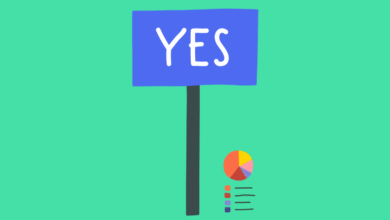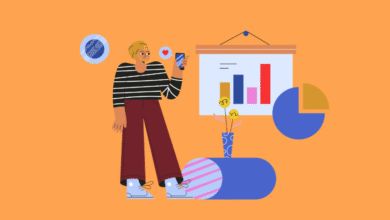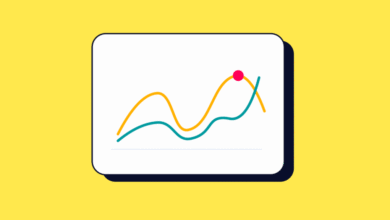
Your ads are live. Your targeting is sharp. You’re spending steadily. But somehow… results are flat. Click-through rates are dipping. Conversions are inconsistent. And the algorithm just isn’t delivering like it used to.
Chances are, it’s not your product or your audience.
It’s your creative format.
Relying too heavily on a single ad format whether it’s static images, stories or reels-can quietly erode performance over time. It’s called ad fatigue, and it hits hardest when users see the same kind of ad in the same way too often. Even if you’re rotating content, using one format means Meta has fewer ways to test, learn and reach your audience across placements.
That’s where ad format diversification becomes more than a creative choice. It becomes a performance lever.
In this guide, we’ll break down:
- Why Meta’s algorithm favors format variety
- What each format is best used for (with real examples)
- How to build a diversified creative mix without losing your brand voice
- And what happens when you don’t diversify at all
Whether you’re a brand manager or media buyer, this isn’t just about making better ads, it’s about making your budget work harder.
Let’s get into it.
Subscribe to our mailing list to get the new updates!
Why Ad Format Variety Matters More Than Ever
If you’ve been advertising on Meta for a while, you’ve probably heard the phrase “creative is king.” But what many marketers miss is that format plays just as big a role in performance as the content itself. A brilliant idea in the wrong format can fall flat, while a simple message in the right format can outperform everything else in your campaign.
Meta’s algorithm isn’t just looking at your targeting and your bid. It’s watching how users engage with your content. And when you serve only one format -say, single images- it limits how much the system can learn. You’re giving it fewer opportunities to test placements, less fuel for engagement optimization, and almost no creative flexibility across devices.
On the user side, things are shifting fast. Audiences today scroll through content in different ways on different platforms, even within Meta itself. Some spend their entire session flipping through Stories. Others stop only for video or swipeable Carousels. Some won’t engage at all unless the ad looks like native Reels content.
That’s why diversifying your ad formats isn’t just about avoiding boredom. It’s about meeting people where they are, and in the way they prefer to consume content.
Here’s another layer: creative fatigue. When users see the same format over and over, even fresh content can feel stale. And when Meta notices a dip in engagement, it throttles delivery. Not because your product is bad, but because your format no longer holds attention.
If you’re only using one format, you’re not just missing reach. You’re missing insight. Meta can’t tell you which formats resonate best if you never test more than one. And in a platform that thrives on testing, that’s a big blind spot.
So, whether you’re aiming for more impressions, better cost per click, or deeper engagement, creative diversity isn’t just a nice-to-have. It’s a necessity.
Meta Ad Formats You Should Be Using (and What They’re Good For)
Meta offers a growing menu of ad formats, but most advertisers lean on just one or two. That’s not just a missed opportunity, it’s a performance bottleneck.
Each format has its own strengths, suited to different stages of the funnel, creative types and user behaviors. A format that shines in awareness might fall flat at conversion. One that works for static promotions may not support storytelling.
Let’s break them down in a way that actually helps you use them intentionally:
| Ad Format | Best Used For |
| Single Image Ads | Evergreen offers, retargeting, simple messages |
| Video Ads | Storytelling, testimonials, product demos |
| Carousel Ads | Multi-product showcases, education flows, feature highlights |
| Collection Ads | Mobile-first shopping, eCommerce catalogs |
| Stories Ads | Fast, full-screen engagement, limited-time promos |
| Reels Ads | Trend-driven engagement, short-form entertainment |
| Lead Ads | Quick lead capture, gated content, newsletter signups |
| Instant Experience | Full-screen interactive storytelling or deep product discovery |
Of course, this table is a starting point. Let’s make it a little more real:
A fashion brand might launch a new collection with Reels, follow it up with Carousel fit guides, and then use Collection ads for shoppers ready to browse. A SaaS company might use video for testimonials, Stories for new feature callouts, and Lead Ads to get demo signups all in the same week.
The point isn’t to use every format. It’s to match the format to the job it needs to do, and to give Meta the variety it needs to learn, adapt and optimize across placements.
Still leaning on just static images or a single Carousel? Don’t worry, you’re not behind. You’re just one smart test away from turning things around.
How to Choose the Right Format for the Right Objective
Different people engage with different formats at different moments. Sounds obvious, right? Yet many campaigns fall short because they treat every format like it’s doing the same job.
In reality, format selection should be guided by intent. What do you want the user to do? And where are they in their decision-making process?
Here’s how to align ad formats with campaign goals:
Awareness: Catching Attention and Building Recognition
At the top of the funnel, your job is to stop the scroll. You’re introducing your brand or offer, often to a cold audience. This is where visual impact matters more than fine details.
Ideal formats for awareness:
- Reels Ads: Short, punchy and native to how people consume entertainment
- Stories Ads: Full-screen and fast-paced, perfect for urgency or bold visuals
- Video Ads: Great for introducing a brand story, product overview or emotional hook
Avoid heavy text or complexity here. Simplicity wins.
Consideration: Educating and Creating Engagement
In the middle of the funnel, your audience is aware, but they need more context. They might be comparing options, learning how your product works, or deciding if it’s relevant to them.
Ideal formats for consideration:
- Carousel Ads: Let users swipe through features, use cases or product variations
- Instant Experience: A full-screen, mobile-first landing page inside the Meta platform
- Lead Ads: Perfect for gated content, pre-registrations or early interest forms
This is your chance to teach, not just tease.
Conversion: Nudging Action and Capturing Demand
At the bottom of the funnel, clarity is everything. Your goal is to get the click, the lead or the sale fast. These users are warm. They’ve seen you before. Now they just need a reason to act.
Ideal formats for conversion:
- Single Image Ads: Straightforward, direct and focused on a single CTA
- Collection Ads: Especially for eCommerce, where users can browse and buy
- Retargeting Lead Ads: Simple form fills for people already familiar with your offer
Pair these formats with strong CTAs, urgency or social proof. And make the next step frictionless.
Creative Strategy Tips for Mixing Formats Without Losing Brand Voice
When you start diversifying your ad formats, it’s easy to worry about one thing:
Will everything still feel cohesive?
The short answer is “yes” as long as you build from a shared creative core and apply a few key principles.
Repurpose, Don’t Redesign
You don’t need to create something new from scratch for every format. One strong creative concept can easily be adapted across multiple placements. A 30-second product video can become:
- A short teaser Reel
- A vertical Stories series
- A cut-down feature demo inside an Instant Experience
- A Carousel showing steps from the same video
The more you reuse creatively, the more consistent your message becomes. Just adapt the format to fit the context, not the other way around.
Match Format to Behavior
Each format aligns with a different user mindset. When someone taps through Stories, they’re in a swipe-and-scan mode. When they stop to scroll a Carousel, they’re more likely to explore. When they open a Lead Ad, they expect simplicity.
Design your creative with that behavior in mind. Use urgency and bold visuals in Stories. Add storytelling logic to Carousels. Keep Lead Ads friction-free. Format alone doesn’t drive performance, alignment does.
Keep Your Voice Consistent, Even When the Style Changes
Switching from static to video or from Reels to Carousels doesn’t mean you need to change your tone. Your copy, visuals and brand cues should still reflect the same personality, even if the format shifts.
Think of your formats like instruments. One plays melody, another rhythm but the song should still sound like you.
Use Creative Rotation Like a Playlist
Don’t run the same format endlessly. Rotate formats like you would rotate messages in a well-rounded content calendar. This gives your audience different ways to engage and keeps the algorithm from throttling stale assets.
Set up creative testing cycles that include multiple formats and analyze performance not just by message, but by how that message is delivered.
Because sometimes, it’s not the ad that’s underperforming, it’s just stuck in the wrong wrapper.
What Happens When You Don’t Diversify Formats
If you’ve ever felt like your Meta Ads were slowly becoming less effective -without changing a thing- there’s a good chance format fatigue was creeping in behind the scenes.
It starts subtly. CTRs begin to dip. Frequency creeps up, but conversions plateau. You keep optimizing headlines and refining audiences, but performance still feels stuck. The truth is, even great creative gets stale when it shows up the same way every time.
When you rely on a single ad format, you limit how often and where Meta can deliver your content. The algorithm wants variety. It’s designed to place ads across multiple placements, across devices and user journeys. If you’re running only one type of creative, you’re shrinking the inventory you can compete for, and possibly overexposing your audience to the same exact look and feel.
This also creates a blind spot in your performance data. If all of your creative is showing up in Stories or only as Carousels, you’re not learning how users respond in Reels, on the Feed or through Collection formats. And without those learnings, your optimization strategy becomes reactive instead of proactive.
Over time, this leads to wasted budget. Your cost per result goes up, not because your offer is bad, but because Meta is working with a limited set of tools to do the job. It’s like trying to build a house with only a hammer, eventually you’re going to hit a wall.
The good news? This is one of the easiest performance issues to fix. You don’t need to overhaul your entire campaign. You just need to give Meta more to work with.
And the moment you do, things start to move again.
Examples of Format Diversification in Action
Sometimes, the best way to understand creative strategy is to see it in action. So let’s look at how different brands use multiple formats to engage audiences more effectively across the funnel.
Fashion Brand Launching a New Collection
A DTC fashion label is preparing for its spring drop. Instead of running one polished video across all placements, they break the campaign into tailored formats:
- Reels introduce the vibe of the collection with behind-the-scenes clips, trending audio and influencer try-ons.
- Carousel Ads follow up with close-up shots of key pieces, styling tips and fit notes.
- Collection Ads make it easy for users to browse and buy directly from their phones.
Each format is doing its job -awareness, consideration and conversion- all tied to the same message and visuals.
Service Business Driving Demo Bookings
A productivity app aimed at remote teams wants to generate leads.
They start with a short video ad that tells a relatable story: a chaotic virtual meeting turned productive. Then they retarget viewers with Lead Ads offering a free productivity audit. For warm leads who don’t convert right away, Stories highlight testimonials and product features with quick CTAs.
This mix keeps the funnel moving without feeling repetitive.
B2B SaaS Brand Educating the Market
A B2B software company targeting HR teams needs to balance brand building with lead generation.
They use Reels to humanize the team with founder Q&As and light educational content. Carousel Ads dive into specific features like workflow automation or integrations. And for lower-funnel retargeting, they run single image ads with a clear CTA: “Book a 15-minute walkthrough.”
The result? Better engagement across stages, more accurate campaign optimization and less dependence on one ad doing all the heavy lifting.
Diversify to Maximize Format Strategy Is Now a Performance Lever
When Meta performance starts slipping, most advertisers look to targeting, budget or bids. But often, the real fix is simpler than that. It’s not about how much you’re spending or who you’re reaching, it’s about how you’re showing up.
Ad format diversification gives you more surface area to connect with your audience. It opens new placements, creates fresh engagement, and feeds Meta’s algorithm the variety it needs to optimize your campaigns properly. This isn’t about using formats for the sake of it. It’s about using each format intentionally, because each one serves a different role in the buyer journey.
If you’ve been running the same creative style on repeat, it’s time to expand your mix. Start small. Test one new format in your next campaign cycle. Repurpose what you already have. Let the platform work with more options, not fewer.
Because in today’s attention economy, format isn’t just a creative decision.
It’s a strategy.
And the brands that diversify will be the ones Meta rewards.
Wanna see how your website perform?
Let's run a comprehensive technical SEO audit for your website and share a compelling SEO strategy to grow your online business.
SEO Audit →


